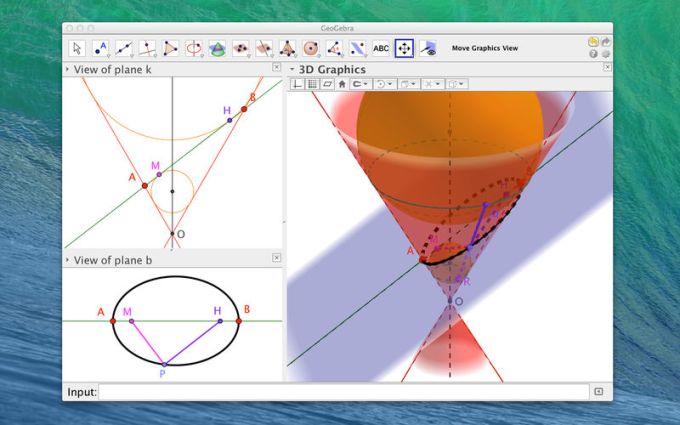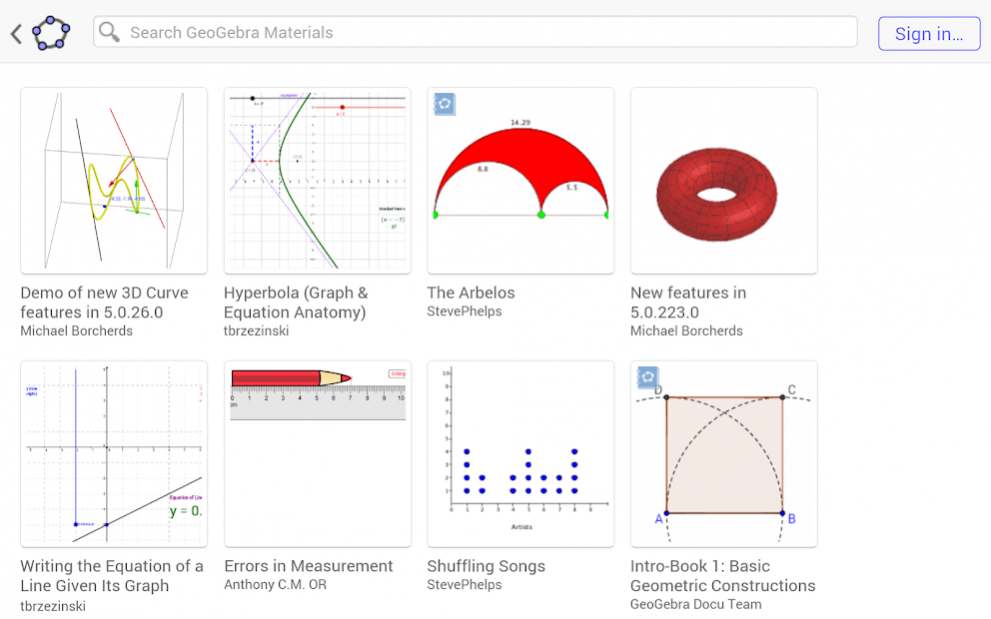GeoGebra Free Download 2025 Latest Version
GeoGebra 2025 is a new version of the open-source application suite that focuses on the area of mathematics in terms of learning and teaching. It includes all types of tools for geometry, algebra, calculus, statistics, and much more to refresh classroom experiences and people’s explorations of mathematical ideas. Furthermore, it will also attempt to shift towards providing interactive, intuitive, and rich histories of mathematical simulation services across the globe for its users.
Overview:
GeoGebra 2025 is the next version, updating the entire package of features that are friendly, perform well, and integrate with new technology. Although the software maintains support for numerous mathematical disciplines using powerful tools for visualizing and solving complex problems, GeoGebra 2024 focuses on features such as more collaboration capabilities, better 3D graphing capabilities, and increased accessibility on any platform mobile to the cloud.
History
Starting with the concept of dynamic geometry, the program has eventually spread into various mathematical disciplines to become a source of information on a world scale, for both the educator and learner. The tradition of the edition of GeoGebra for 2024 involves gathering feedback from users towards further development of current tools while developing new tools for greater participation in mathematics. GeoGebra leads the way on simple and complicated mathematics as this is an always-evolving product through the contributions of many developers and users.
Important Features
- Dynamic Geometry: The ability to create interactive real-time with geometric shapes, constructions, and transformations in providing a deeper insight into the properties of geometry
- Graphing and Algebra: This enables direct graphical representations where students as well as experts can see algebraic equations from the viewpoint of relations between equations and graphs
- 3D Graphing: Powerful graphing of 3D surfaces, curves, and geometric figures by plotting for a better understanding of mathematics.
- CAS (Computer Algebra System): Solve algebraic equations, perform symbolic manipulations, and analyze functions using advanced algebraic functionality.
- Statistics and Probability: Calculate data analysis, regression, statistical visualizations, and probability simulations using built-in tools.
- Spreadsheet Integration: Calculate numerically and handle data within the GeoGebra interface by using a powerful tool for a spreadsheet.
- Collaborative Tools: Provide interaction in sharing or sending interactive lessons, simulations, and constructions with other users in creating group projects, peer learning, and remote collaboration.
- Customizable Interface: This is the personalization of the tools and menus according to individual preferences or teaching needs.
- Inbuilt Connection to Other Platforms: This integrates with other different learning management platforms, such as Google Classroom; thus, assignments and reviews to students will also be easy in that regard.
- Cloud Storage: Allowing saving as well as the opening of documents on GeoGebra in a cloud because then, it could be easily accessed, shared as well as brought to synchronization
Benefits
- It is free and open source, thus accessible for both students teachers, and professionals.
- Support for a large number of mathematical disciplines from elementary geometry to higher calculus.
- Interactive in nature, hence the abstract concept is visualized at high speed.
- Due to cloud-based synchronization, accessibility is possible through different devices.
- The resource is both a tool of collaboration and also a sharing device. It mainly proves to be very important for the teachers as well as for the students.
Cons
- Is not easy on the new user since it’s loaded with several features and tools
- Some advanced functions require one to learn more through extra resources and help.
- Performs slowly, especially on highly complicated constructions or larger data sets.
- The more complex functions will require greater programming or symbolic mathematics skills.
System Requirements
- OS: Windows 7/8/10, macOS 10.12 or later, Linux (depending on the distribution)
- Processor: 1.6 GHz or faster
- RAM: 2 GB or more
- Storage: 500 MB of available space
- Graphics: Graphics card with hardware acceleration
- Network: Internet connection for cloud sync and updates
- Minimum Recommended Requirements:
- OS: Windows 10, macOS 10.14 or later, Linux (latest stable release)
- Processor: Intel Core i5 or better
- RAM: 4 GB or more
- Storage: 1 GB of available space
- Graphics: dedicated GPU for high performance on 3D graphics
- Network: High-speed internet connection for high performance if online applications are to be employed
- GeoGebra has developed its 2024 download
- Open the GeoGebra website.
- Click on download.
- Select the choice of version, Windows, macOS, Linux, Android, or iOS.
- Click to download for installation
- From this point, follow the on-screen instructions for installation
- Upon installation, you can begin using GeoGebra 2024 for your mathematical application or in school.
Conclusion
GeoGebra 2024 is one of the necessary learning tools in mathematics as it brings a multiplicity of possible options to help with solving and illustrating and also in teaching various kinds of mathematical problems. Aspects and functionalities would be the differences in making the experience much more convenient for users as collaboration would improve greatly. That means it is pretty valuable both to students and to instructors. Let us explore geometry, or do even the most complicated statistical analysis, GeoGebra 2024 will help to do it all in mathematics.



Leave a Reply